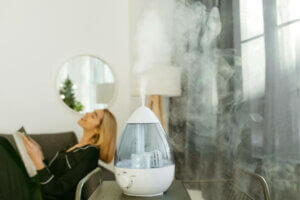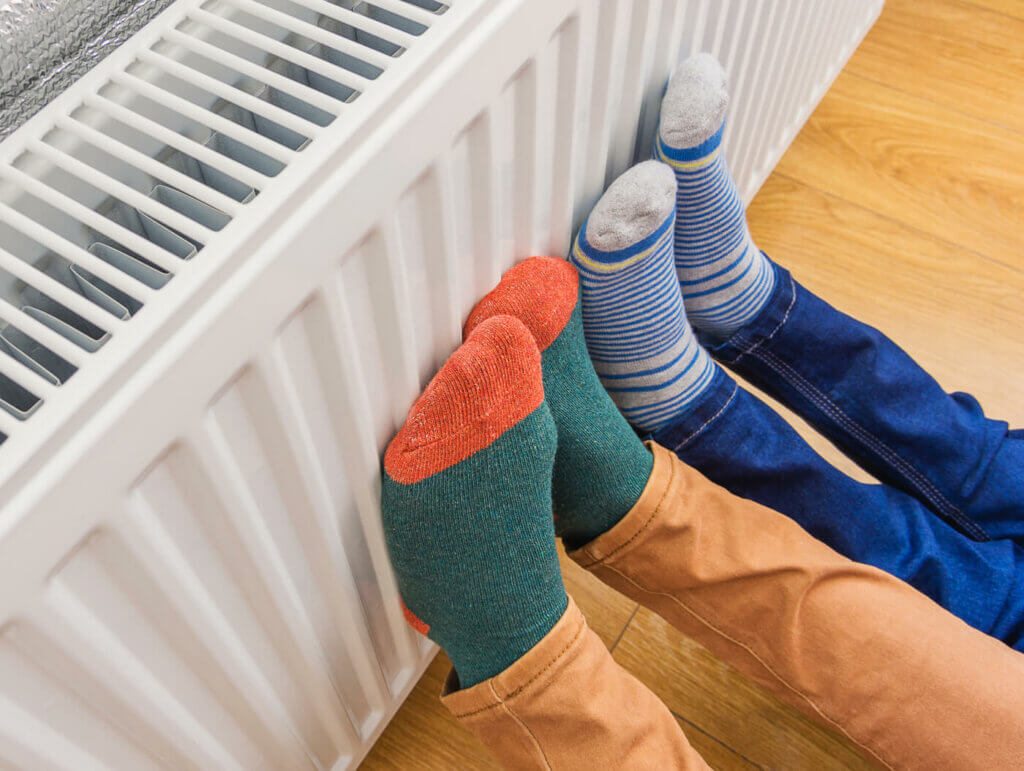Solutions to Fight Indoor Dryness

Heating causes condensation in the environment, meaning the atmosphere isn’t entirely healthy. For this reason, it’s important to look for solutions to avoid indoor dryness.
Heat can be uncomfortable, to such an extent that it affects your breathing. This can be bothersome. Your home is the place to relax, rest, and disconnect, as long as the temperature is right. For this reason, it’s a good idea to pay attention to the following.
Why do you feel indoor dryness?

As we mentioned at the beginning of the article, heating is the main culprit of dry environments. People usually crank the heating all the way up to achieve a pleasant climate indoors, especially when it’s cold outside.
Heating dries rooms for different reasons. Firstly, due to the absence of air circulation, either because you don’t have extractors or because you don’t air your house from time to time. The latter is very effective. Although it can get cold, you’ll have a healthy environment.
On the other hand, the heat itself causes loss of moisture and, consequently, fast evaporation. If this continues over time, it can affect your home’s condition and may lead you to need to humidify your rooms.
The main goal is to achieve well-being.
5 effective solutions to fight indoor dryness
Firstly, it’s a good idea for you to inspect your home: the insulation, heating system, and the windows. This way, you’ll know if there’s a possibility of thermal variation. Below, discover five ways to fight indoor dryness:
- The most important thing is for you to free the environment of the condensation that produces during the day. To do this, you need to air your home a couple of times a day. It’s a way of clearing the air and allowing freshness to enter.
- Plants can also increase oxygen in your home, provide nice scents, enrich the decoration, and refresh spaces. You don’t have to have too many. Nevertheless, adding some to each room will naturally harmonize spaces.
- When you wash your clothes, you can let them dry in the room where you spend the most time, whether in the living room or the bedroom. When you see that the area is not so dry you should take the clothes out to avoid excess moisture.
- Placing damp rags or wet towels next to radiators will also make a room more comfortable.
- Another good idea is to place a bowl containing water next to the radiator. This will create evaporation to achieve a pleasant environment.
The humidifier – an effective source

Humidifiers are fundamental home appliances if you want to add moisture to your home. You don’t have to place one in every room. In fact, to improve the atmosphere of your home, you can simply have one, and turn it on for a few minutes a day.
It works perfectly to alleviate dryness and you can use it while the heating is on. Obviously, you don’t have to place a humidifier next to your radiator. It’s important to leave some space between them. This way, the steam can diffuse naturally, without heating.
More and more families are using these appliances. You can put them in any room and they will help improve your respiratory system. In the long term, you’ll see that your throat doesn’t get so dry.
Control the temperature of your home
In addition to all the tips we’ve shared so far, there’s an essential principle that you must put into practice on a daily basis: temperature control and management. It’s important for the temperature of your home to be between 68 and 71 degrees Fahrenheit.
There’s nothing better than feeling comfortable and at ease. This is easy to achieve if the weather is pleasant and if you adjust the thermostat to your liking. This way, you’ll be comfortable and fight indoor dryness.
Heating causes condensation in the environment, meaning the atmosphere isn’t entirely healthy. For this reason, it’s important to look for solutions to avoid indoor dryness.
Heat can be uncomfortable, to such an extent that it affects your breathing. This can be bothersome. Your home is the place to relax, rest, and disconnect, as long as the temperature is right. For this reason, it’s a good idea to pay attention to the following.
Why do you feel indoor dryness?

As we mentioned at the beginning of the article, heating is the main culprit of dry environments. People usually crank the heating all the way up to achieve a pleasant climate indoors, especially when it’s cold outside.
Heating dries rooms for different reasons. Firstly, due to the absence of air circulation, either because you don’t have extractors or because you don’t air your house from time to time. The latter is very effective. Although it can get cold, you’ll have a healthy environment.
On the other hand, the heat itself causes loss of moisture and, consequently, fast evaporation. If this continues over time, it can affect your home’s condition and may lead you to need to humidify your rooms.
The main goal is to achieve well-being.
5 effective solutions to fight indoor dryness
Firstly, it’s a good idea for you to inspect your home: the insulation, heating system, and the windows. This way, you’ll know if there’s a possibility of thermal variation. Below, discover five ways to fight indoor dryness:
- The most important thing is for you to free the environment of the condensation that produces during the day. To do this, you need to air your home a couple of times a day. It’s a way of clearing the air and allowing freshness to enter.
- Plants can also increase oxygen in your home, provide nice scents, enrich the decoration, and refresh spaces. You don’t have to have too many. Nevertheless, adding some to each room will naturally harmonize spaces.
- When you wash your clothes, you can let them dry in the room where you spend the most time, whether in the living room or the bedroom. When you see that the area is not so dry you should take the clothes out to avoid excess moisture.
- Placing damp rags or wet towels next to radiators will also make a room more comfortable.
- Another good idea is to place a bowl containing water next to the radiator. This will create evaporation to achieve a pleasant environment.
The humidifier – an effective source

Humidifiers are fundamental home appliances if you want to add moisture to your home. You don’t have to place one in every room. In fact, to improve the atmosphere of your home, you can simply have one, and turn it on for a few minutes a day.
It works perfectly to alleviate dryness and you can use it while the heating is on. Obviously, you don’t have to place a humidifier next to your radiator. It’s important to leave some space between them. This way, the steam can diffuse naturally, without heating.
More and more families are using these appliances. You can put them in any room and they will help improve your respiratory system. In the long term, you’ll see that your throat doesn’t get so dry.
Control the temperature of your home
In addition to all the tips we’ve shared so far, there’s an essential principle that you must put into practice on a daily basis: temperature control and management. It’s important for the temperature of your home to be between 68 and 71 degrees Fahrenheit.
There’s nothing better than feeling comfortable and at ease. This is easy to achieve if the weather is pleasant and if you adjust the thermostat to your liking. This way, you’ll be comfortable and fight indoor dryness.
All cited sources were thoroughly reviewed by our team to ensure their quality, reliability, currency, and validity. The bibliography of this article was considered reliable and of academic or scientific accuracy.
- Emma, Callery: Enciclopedia práctica de la decoración, Everest, 2001.
- Greer, Beth: La casa natural: mejora tu salud, tu hogar y el planeta, habitación por habitación, Zenith, 2018.







